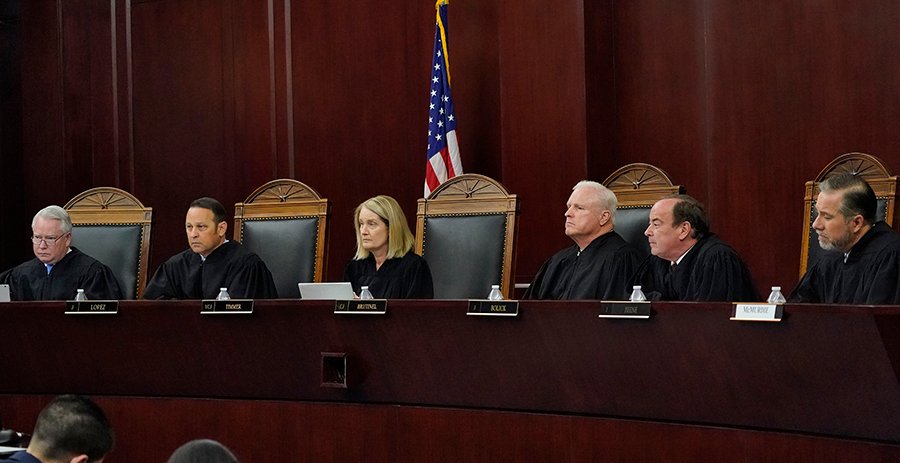Ann Scott Timmer
Rural Heritage May Play Key Role in Next Supreme Court Justice Selection

The departure of Justice Robert Brutinel from the Arizona Supreme Court has left the court with all justices now originating from Maricopa County. Brutinel, who retired on October 31, brought extensive experience from his career as a judge and attorney in rural Arizona.
In selecting new justices, the Commission on Appellate Court Appointments prioritizes merit but also considers the broader diversity of the state’s population. While there’s no formal requirement for geographic representation, a historical precedent suggests that at least one justice typically comes from outside the state’s most populous county.
As the commission prepares to interview eight Supreme Court candidates, a connection to rural Arizona has emerged as a significant qualification. Chief Justice Ann Timmer emphasized the importance of this perspective as essential in piecing together a well-rounded court.
Brutinel’s tenure included significant roles as an attorney in Prescott and 14 years as a Superior Court judge in Yavapai County. Previous Supreme Court Justices, such as Andrew Gould and John Pelander, also had roots outside Maricopa, enriching the court’s diversity.
Pelander highlighted that while geographic background does not significantly alter legal application, perception matters. He expressed the need for at least a semblance of geographic diversity on the court to foster a broader understanding of the state’s varied legal landscape.
The commission discussed the importance of rural perspectives, particularly concerning access to justice. As Justice Timmer pointed out, Arizona ranks low in attorney availability; the ABA’s 2024 statistics show only 2.14 attorneys per 1,000 residents.
Among the eight candidates, two, Maria Elena Cruz from Yuma County and Regina Nassen from Tucson, are from outside Maricopa County. This reflects a renewed emphasis on geographic diversity in judicial appointments, especially given the realities of accessing legal counsel in less urbanized areas.
Former appellate court commissioner Doug Cole reiterated that while merit should dominate the discussion, geographic diversity plays an essential supplementary role. This balance is crucial as the commission forwards recommendations to the governor.
In terms of gender and ethnic representation, five women are among the eight applicants. Notably, Cruz identifies as Black Latina, while McPaul is recognized as an Indigenous member of the Navajo Nation. These identities will contribute to the commission’s focus on reflecting the state’s demographic makeup.
Interviews for the candidates are scheduled for December 9, where each will present for 30 minutes. The commission must subsequently recommend at least three nominees to Governor Hobbs, with a cap of five candidates reflecting political diversity requirements.
Once the list is sent to the governor, Hobbs will have a 60-day period to finalize the appointment of a new justice. The selection process underscores the ongoing commitment to evaluate diverse backgrounds alongside professional qualifications in Arizona’s judicial system.


















